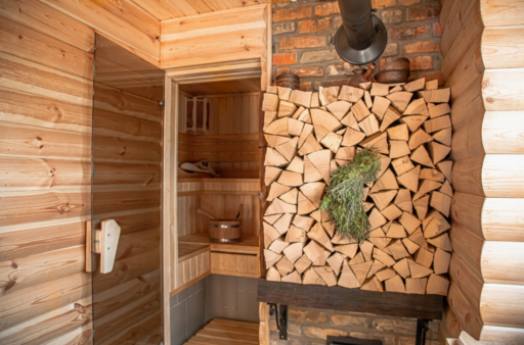Understanding Air Circulation in Wood-Burning Saunas
22 March 2025 by Diane T.Creating a comfortable and efficient environment in your wood-burning sauna requires careful attention to air circulation. Proper airflow not only ensures that your sauna heats up quickly and evenly, but it also helps maintain a clean and healthy atmosphere. By understanding the principles of air circulation in saunas and implementing some simple tips, you can optimize your sauna experience and enjoy all the benefits of this traditional heat therapy.

Maximizing Airflow for Efficient Heating in Saunas
By maximizing airflow, you can ensure that heat is evenly distributed throughout the sauna, creating a comfortable and relaxing environment for users. One important factor to consider when maximizing airflow in a sauna is the design and placement of the ventilation system. The ventilation should be strategically placed to allow for the most efficient circulation of air. This helps to prevent pockets of stagnant air from forming, which can lead to uneven heating. In addition to the layout of the ventilation system, it is also important to consider the size and capacity of the sauna stove. A stove that is too small for the size of the sauna will struggle to heat the space efficiently, leading to uneven temperatures and wasted energy. On the other hand, a stove that is too large may overheat the sauna and create uncomfortable conditions for users. Finding the right balance is key to maximizing airflow and ensuring efficient heating. Regular maintenance of the ventilation system is another crucial aspect of maximizing airflow in wood-burning saunas. Keeping the vents clean and free of blockages is essential for proper air circulation. Additionally, replacing any worn or damaged components of the ventilation system in a timely manner can help to optimize airflow and prevent issues with heating efficiency. By paying attention to the design, placement, and maintenance of the ventilation system, sauna owners can maximize airflow and achieve efficient heating in their wood-burning saunas. This not only creates a more enjoyable sauna experience for users but also helps to prolong the lifespan of the sauna and reduce energy costs in the long run.Tips for Maintaining Optimal Air Circulation in Wood-Burning Saunas
Maintaining optimal air circulation in wood-burning saunas is crucial for ensuring efficient heating and a comfortable sauna experience. Here are some tips to help you achieve the best airflow in your sauna:Properly position the air vents: Make sure that your sauna's air vents are positioned correctly to allow for proper air circulation. Vents should be strategically placed to allow fresh air to enter the sauna while ensuring that hot air can escape effectively.
Regularly clean the vents: It is essential to regularly clean the air vents in your sauna to prevent dust and debris from obstructing airflow. Ensure that the vents are free from any blockages to maximize air circulation.
Use a sauna door with ventilation: Investing in a sauna door with built-in ventilation can help improve air circulation in your sauna. These doors are designed to allow for efficient airflow while still maintaining the heat within the sauna.
Install a chimney or flue: A well-functioning chimney or flue is essential for proper ventilation in wood-burning saunas. Make sure that your chimney is clear of any obstructions and functioning correctly to allow for the efficient escape of smoke and hot air.
Monitor humidity levels: High humidity can hinder air circulation in a sauna, leading to a stuffy and uncomfortable environment. Use a hygrometer to monitor humidity levels and adjust as needed to maintain optimal conditions for air circulation. By following these tips for maintaining optimal air circulation in wood-burning saunas, you can ensure a comfortable and efficient sauna experience for yourself and your guests.